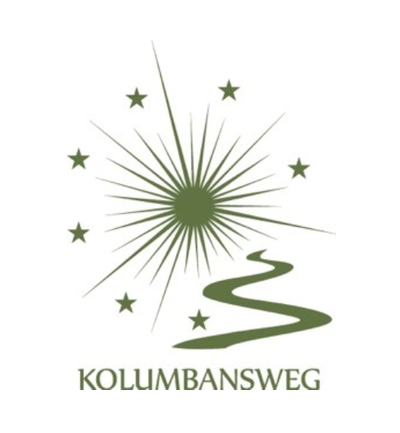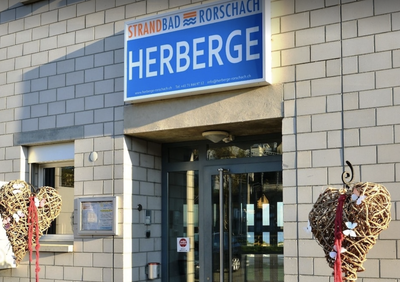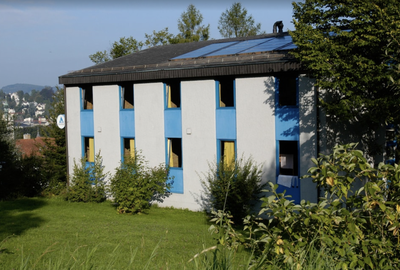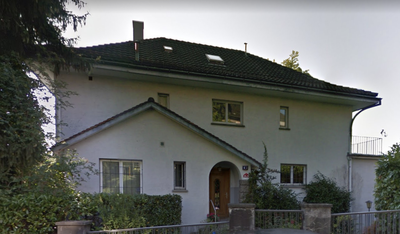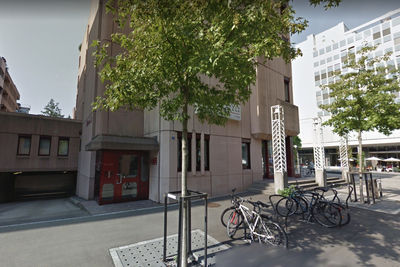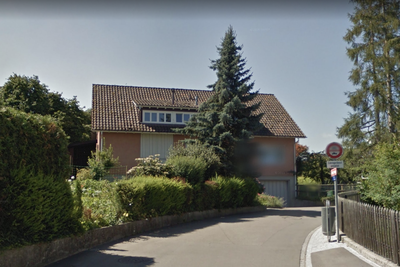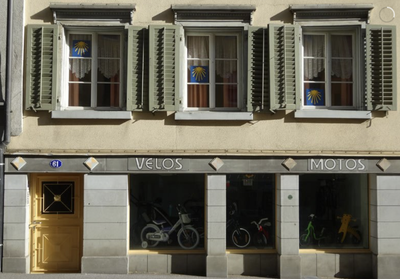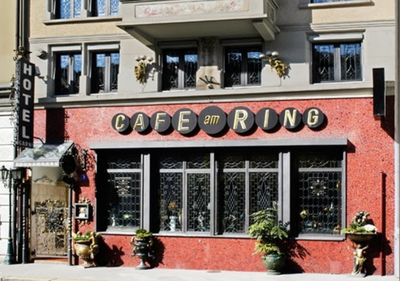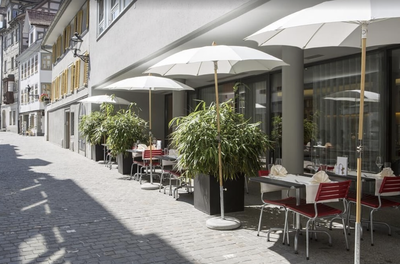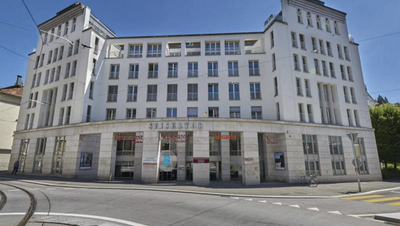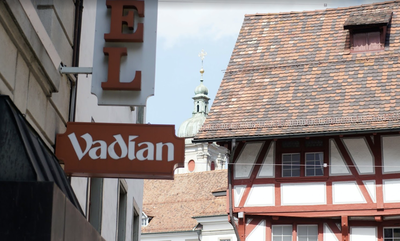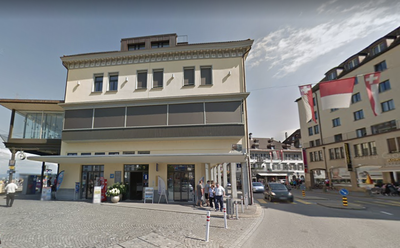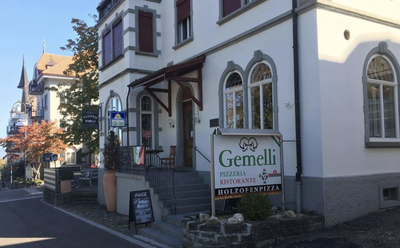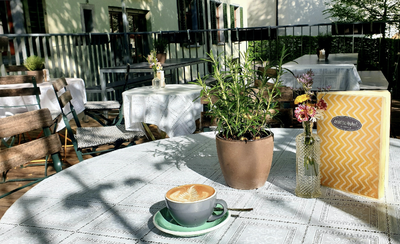Sankt Gallen to Rorschach

Sankt Gallen
13. Sankt Gallen to Rorschach
Easy
6h
24,7km
+309m
-587m
Step
Embed this item to access it offline
Begun in the Mülhenenschlucht gorge where Gallus founded his hermitage in 612, the stage crosses beautiful districts of Sankt Gallen followed by Sankt Fiden before reaching the green Steinach valley to follow it more or less. At the top of a hillside in the valley, Lake Constance suddenly appears in its mountain setting.
8 points of interest
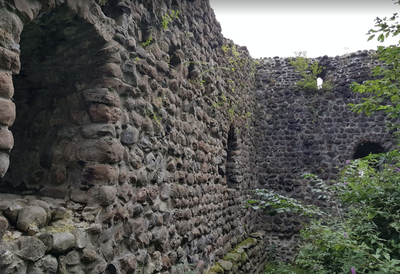
Château Steinerburg HistoricalSteinerburg Castle
Ruin of a castle built in the 12th century by the Lords of Steinach. It came under the control of the abbey of St Gall from 1577 to 1805.
More about it.
 St Columban
St ColumbanSt Martin's church
In the centre, two stained glass windows depict Columbanus and Gallus.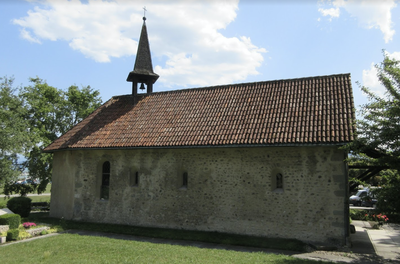
Galluskapelle St ColumbanSaint Gall's Chapel
Arbon was already a Roman settlement before Columbanus arrived there (Arbor Felix, the happy building). When Columbanus arrived there with his monks, there was a Christian community and a presbyter named Willimar. After separating from Columbanus, Gallus returned to Arbon, where he was cared for due to his illness and eventually went to Steinachtobel, where he built his hermitage and later died.
The chapel dates from the 12th/13th century.
Église St Jacques St ColumbanSaint James Church
Steinach is first mentioned in 769 in connection with the transfer of the Otmar body from the Isle of Werd (at the outlet of the Rhine from Lake Constance) to St. Gallen. Otmar was condemned to starvation in 759, then pardoned and sentenced to life imprisonment on this island, where he died the same year. Ten years later, the monks of the monastery of St. Gallen repatriated the body of its founder to their monastery.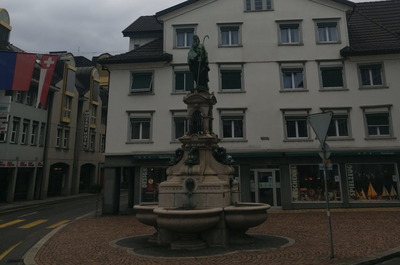
Jakobsbrunnen CulturalFountain of Jacques
Since the year 1000, Rorschach has been a crossing point for many pilgrims, especially to Santiago de Compostela but also to Einsiedeln. On today's Kronenplatz stood the Jakobskapelle, a resting place for pilgrims which was demolished in 1833. The James Fountain (Jakobsbrunnen) was built as a memorial. To this day, the fountain bell still rings the Angelus twice a day.
Musée im Kornhaus HistoricalKornhaus Museum
The settlement on the shores of Lake Constance dates back to the Stone Age in the form of lake cities. The shores were occupied by the Romans before the arrival of the Alemani, who founded Rorscharch. The museum shows illustrations of these cities and the history of the region.
Église St Colomban St ColumbanSaint Columban Church
The baroque-style church of Saint Columban recalls the passage of this saint in this already populated region.
A statue of the saint dominates the portal.
Mariabergkloster CulturalMariaberg Monastery
Former Benedictine monastery turned into a training centre for teachers.
Description
At the eastern end of Gallusplatz, take St Georgen Strasse and then Moosbruggstrasse to reach the Spisertor roundabout:
- Turn into the first street on the right (Linsebülhstrasse) followed to the end (Kirche Linsebülh). Continue along the axis (Flurhofstrasse and Tempelackerstrasse) along the hospital to reach road N°7 (Rorschacher Strasse). At the crossroads (traffic lights), turn left (Splügenstrasse) and immediately right (Oststrasse). Take the second street on the right (Lindenstrasse) followed until the crossroads with Lukasstrasse.
- Turn left (Lukasstrasse). The route crosses a railway track leaving the main street on the right (Espentobelstrasse) before a bend to the left. Continue the bicycle / pedestrian track at the end of the dead-end road that crosses under the railway and on the Steinach before following the river and a new railway. At one point, the Wanderweg marked trail makes a sharp turn to cut the railway and leave the valley.
- Continue on the plateau towards the north and Mörschwil where the route approaches the railway, crosses it again to reach the bottom of the valley and go up again opposite the ruins of Steinerburg Castle where Lake Constance appears. In the farm below, turn right (Höhenweg).
- Go down into the fruit trees (Burgstrasse), cross the motorway and, after the first house in Obersteinach, turn left behind the pedestrian path (marked) that goes down and crosses the Steinach river. Follow the river on its right bank until you reach the lake road in Steinach.
- If you want to go directly to Rorschach, turn right on the track by the lake. Otherwise, to go to Arbon, take the track on the left along road N°13 (Hauptstrasse). At the bridge under the railway, continue along the axis (Bahnhofstrasse) until you reach St Martin's church and especially the St Gallus chapel, an important objective of this detour.
- To reach Rorschach, follow the track along the bank and the road (Seestrasse) at the exit of Horn.
- At the end of the marina of Rorschach, cross the railway (Seestrasse), turn left onto Hauptstrasse and take the first street on the right (Kirchestrasse) which arrives at the church of St Colomban.
- Departure : Abbey church, Klosterhof, 9001 St Gallen
- Arrival : St Colomban Church, Kirchstrasse 1, 9400 Rorschach
- Towns crossed : Sankt Gallen and Thurgau
Altimetric profile
Report a problem or an error
If you have found an error on this page or if you have noticed any problems during your hike, please report them to us here:

